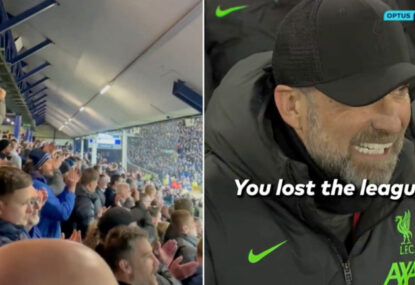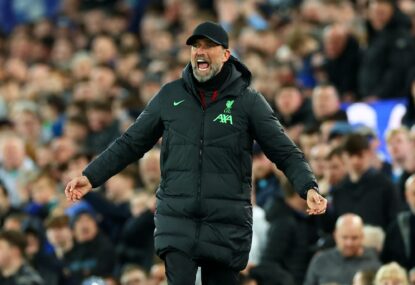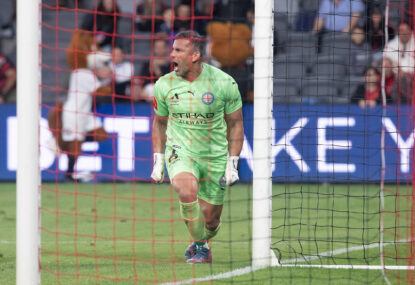With four games played, two at home and two away, West Ham’s record produces interesting reading.
They have played two home matches and lost twice, with an aggregate score of 4-6. Yet their away form is two wins from as many games, with an aggregate score of 5-0.
The discrepancy becomes even more astonishing when you factor in the standard of the opposition. With all due respect to Leicester City and Bournemouth, and with the current league table notwithstanding, Arsenal and Liverpool are expected to finish comfortably above them this season.
And yet, it’s been the travelling West Ham fans that have been richly rewarded for their dedication, witnessing hugely impressive performances in foreign stadiums that have, until now, only been places of despair for the Hammers. To find playing at home a little more trying than is traditionally expected is one thing; to buck the trend to this degree is entirely another.
The away plan
So, how to explain the yawning disparity in home-and-away form? Well, simply put, Slaven Bilic’s team are yet to find a coherent style of play when allowed the majority of possession, and given the responsibility of taking the game to their opponents.
Their counter-attacking, swashbuckling approach works on their travels, but it is highly incompatible when they themselves are given the often arduous task of breaking down a deep-lying defence who are looking to spring forth on the break.
Adding to this, the two teams they have beaten this season only hindered their chances by playing with non-traditional, narrow-minded wingers. Arsenal were two goals down by the time they brought on Theo Walcott and Alexis Sanchez, and up until that point only the excellent Alex Oxlade-Chamberlain had threatened the West Ham defence.
Oxlade-Chamberlain’s directness, and willingness to charge down the outside to the byline, was made all the more impressive when contrasted with Aaron Ramsay’s and Mesut Ozil’s impotent tiki-taka in the central areas. With Reece Oxford and Mark Noble rudely patrolling that middle corridor, the wings were the only obvious points of weakness for West Ham, and yet Arsenal failed to probe them.
But Bilic wasn’t simply relying on obdurate defending to get a result, nor was his team’s victory a smash-and-grab affair. No, against Arsenal his defensive-mindedness was garnished with sparkling counter-attacking play, all made possible by the canny abilities of Mauro Zarate and Dimitri Payet.
Payet already looks like one of the summer’s finest signings, a player of rare poise on the ball, and with feet quicker than almost anyone in the league. The way he danced around the Arsenal midfielders, bought himself time and space, and then released the tireless Diafra Sakho or the marauding Cheikhou Kouyate, was truly a pleasure to watch. He did much the same against Liverpool, joined this time by the equally quicksilver Manuel Lanzini.
Asymmetrical fullbacks
Against Liverpool, West Ham probed with discretion, with Aaron Cresswell pushing much further up the pitch than his right-sided fullback colleague James Tomkins.
Tomkins, a natural centre back filling in for the suspended Carl Jenkinson, was of course much more suited to defending than attacking, and had been clearly told to hold his position. His calmness at the back was apparent from the first minute, chesting back to keeper Darren Randolph, diffusing an early nervy moment.
The fullbacks’ differing briefs were also on show during the build-up to the opening goal; as West Ham attacked up the right-hand side, Tomkins retreated backward, opting not to make an overlapping run.
When the ball was crossed in by Payet, and cleared shoddily by Martin Skrtel, Cresswell was the first to it, meeting it on the edge of the box. On the weak side of the pitch, Cresswell had deliberately surged forward to join the attack, and it was from his sober pass that the debutante Lanzini tapped home.
Alternating between pressing and defending
This focused needling also continued off the ball. Here roving midfielders Kouyate and Noble were crucial. Both players were hinging assets for both the West Ham attack and defence, pushing up to press with Sakho and Lanzini, dropping back to help Pedro Obiang, and providing vigour and spritz on the break with hard running.
Multiple times throughout the match Kouyate would join his attacking teammates, adding potency to a sudden full-field press, while Noble would hold his position, or vice-versa. At one point in the first half, Noble was pressing Mignolet into a long clearance, while Kouyate was challenging Christian Benteke at the subsequent header; they were, at times, a huge distance apart.
At other times, both players would back off completely, settling into a flat formation that erected a claret-and-blue wall between the deeper midfield and the attack. With Payet and Lanzini diligent in their tracking back, helping to nullify wide passing options, a lot of pressure was put on Liverpool’s defenders and defensive midfielders to pass with pinpoint accuracy and speed. Dejan Lovren, in particular, fell apart under this pressure.
Liverpool, like Arsenal, were far too narrow in attack. This was not helped by the fact that Joe Gomez, who started at left back, is a right-footed player and looks wholly uncomfortable attacking down the flank. Playing behind Philippe Coutinho, Gomez needed to provide essential width.
Coutinho’s predilection to drift inside, keeping in mind the raucous success that Leicester and Bournemouth had with touchline-hugging wingers in previous weeks, meant that Gomez’s reluctance to find the byline was a damaging problem. Bilic had identified that Nathaniel Clyne, who is a fine attacking fullback, was going to be much more of a problem in this way, and so Payet was deployed as almost a second fullback when West Ham were defending.
Gomez’s ineffectiveness on the wing was seen throughout, as well as Payet’s discipline when defending against the threat of Clyne. As a sort of bonus, with Payet so deep when West Ham won the ball back, his footspeed and guile helped make passing out of defence a far less difficult task.
Identifying a weak link
But it was the deliberate targeting of Lovren that really swung the match. The Liverpool centre back had been excellent over their first three matches, but his passing has always been suspect, and his decision making unreliable.
There was a preview of what was to come, seven minutes prior to his goal-causing error. West Ham were determined to cut off passing options and have Sakho press Lovren whenever he had the ball, in the 21st minute, along with Kouyate and Lanzini, pressure forced a misplaced pass. Luckily, it was cleaned up by the backtracking Gomez.
But then, eight minutes later, in a very similar situation, the combination of Lanzini harrying, and Sakho patrolling for an interception, forced an indecisive Lovren into a harrowing error, which led to the goal.
The two-goal cushion, established within half an hour, meant that West ham could simply defend for the remainder of the match. The plan had worked, the win was earned, and Liverpool’s already remote chances of a comeback were extinguished completely when their solitary creative source, Philippe Coutinho, was dismissed.
So, why is this approach so successful away from home?
Well, firstly, Leicester and Bournemouth attacked relentlessly down the wings. At Upton Park, the attacking impetus was on West Ham, meaning that Jenkinson and Cresswell were left far more exposed than they had been against Arsenal.
Payet, Nolan and Kouyate lingered further up the pitch, and so weren’t able to get back to help their backtracking fullbacks. Bournemouth’s Max Gradel and Matt Ritchie were cocked, ready to fly down the flanks, and did so with only the exhausted fullbacks to stop them. Errors were forced, and goals were conceded as a result.
Secondly, it appears that Bilic is yet to work out how to arrange this team to control a match, while still remaining defensively solid. Against Liverpool, Payet and Lanzini showed they can be extremely disciplined defensively, while still impacting the match offensively. But the rhythm of a match played in a counter-punch style is very different to the rhythm that arises when attempting to dictate terms.
Defend, defend, defend, attack suddenly, track back, and repeat: that’s the way to counter-attack. Against Liverpool, 62 per cent of Payet’s touches were in his own middle and defensive thirds. Against Bournemouth, neither he or Nolan even touched the ball in their own defensive third. West Ham scored three goals against Bournemouth, enough to win most games. But the concession of four goals was a remarkable collapse.
West Ham’s first four matches set out in crystal clear terms how big an effect the circumstances a team faces at home against so-called inferior opposition, and away against so-called superior opposition, can have on a similar game plan.
Bilic has cracked the code for a successful trip to the Emirates, or Anfield, and his players seem totally versed in what is needed in these scenarios. But dominating your home ground is essential for success in the Premier League.
West Ham will need a different plan – one that, crucially, offers more protection to the fullbacks – with which to greet the canny teams who come calling.




































































































